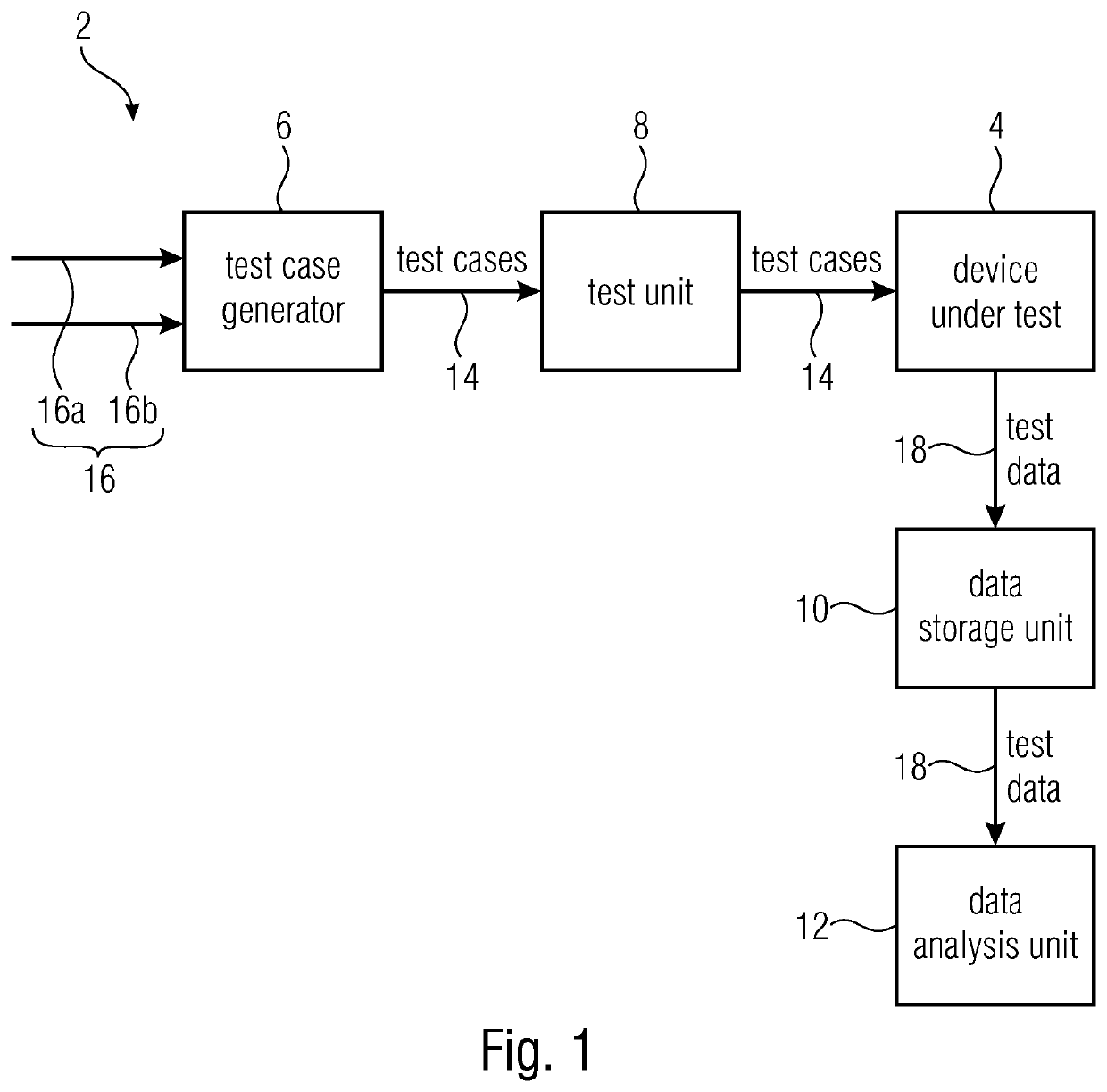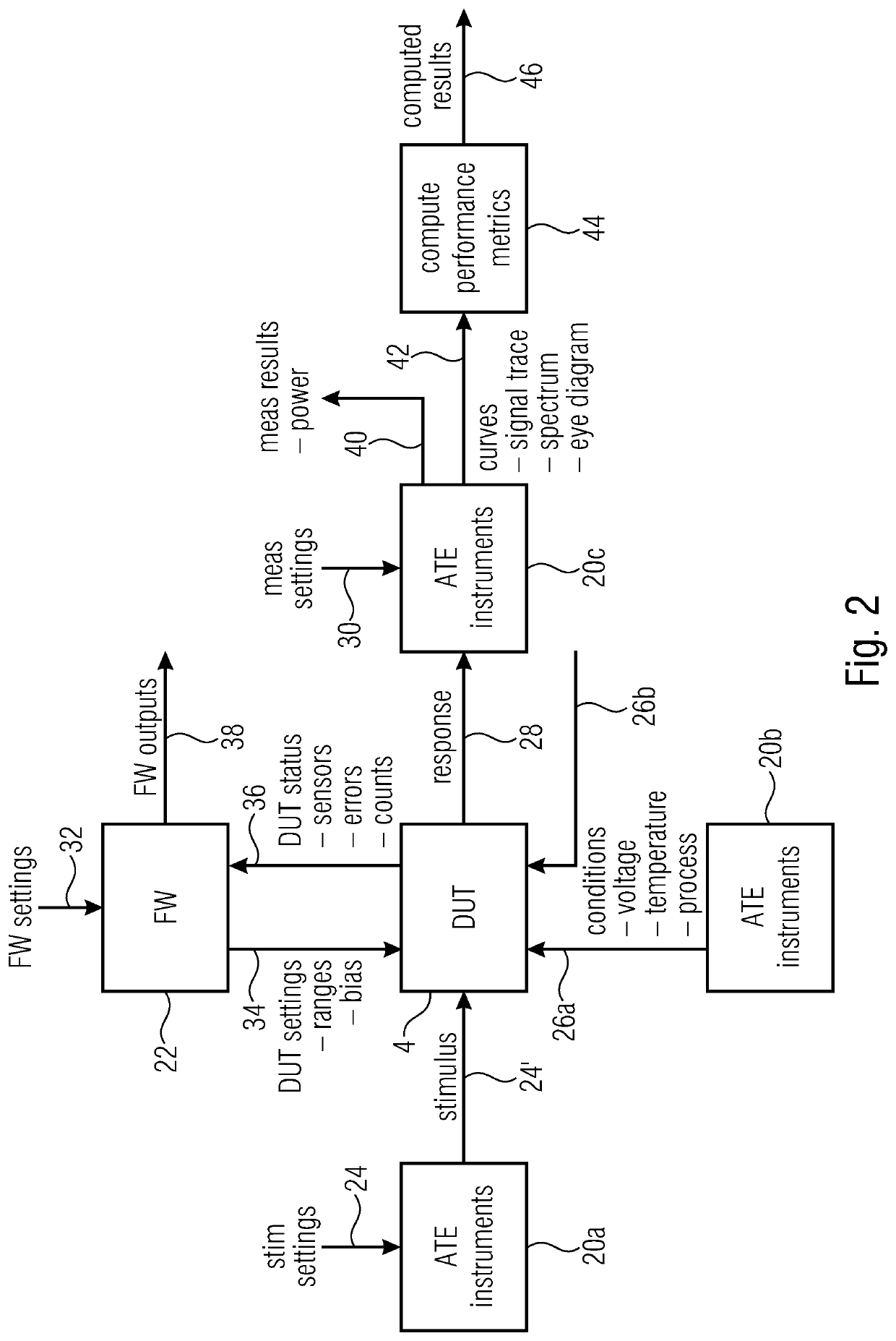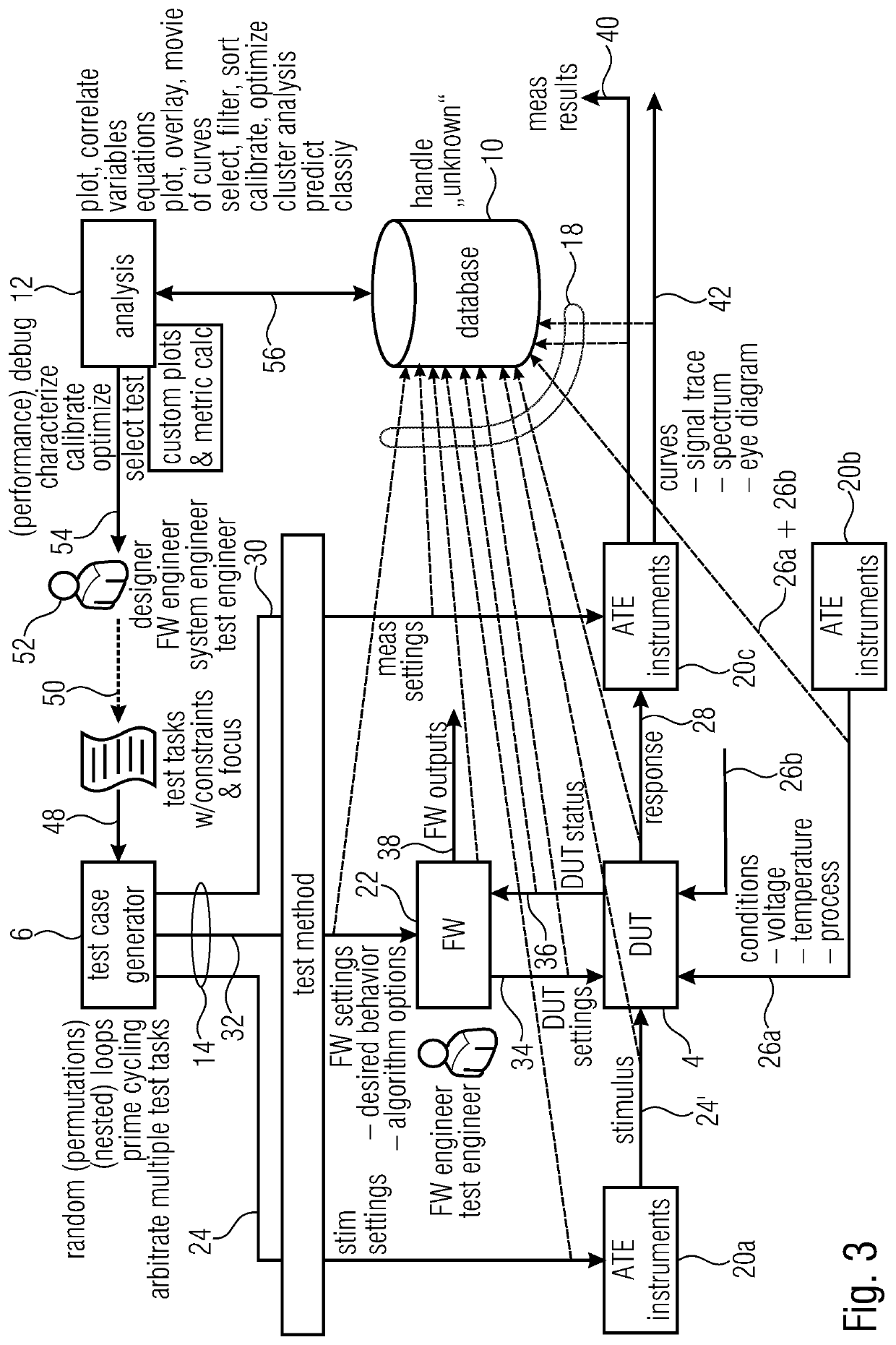Test apparatus and method for characterizing a device under test
a test apparatus and device technology, applied in the field of test apparatus and method for characterizing a device under test, can solve the problems of complex high-dimensional optimization problem, time-consuming and easy to misunderstand process, and the value of unchanged variables and measurement conditions tends to not be documented well, so as to improve the probability of detection of errors, improve the effect of practical relevance and easy analysis
- Summary
- Abstract
- Description
- Claims
- Application Information
AI Technical Summary
Benefits of technology
Problems solved by technology
Method used
Image
Examples
Embodiment Construction
[0036]In the following, embodiments of the invention will be described in further detail. Elements shown in the respective figures having the same or a similar functionality will have associated therewith the same reference signs.
[0037]FIG. 1 shows a schematic block diagram of a test apparatus 2 for characterizing a device under test 4. The test apparatus 2 comprises a test case generator 6, a test unit 8, a data storage unit 10, and a data analysis unit 12. The test case generator 6 is configured to randomly generate a plurality of test cases 14, wherein a test case 14 comprises values of one or more input variables 16a, 16 of a set of input variables 16. The test unit 8 is configured to perform the plurality of test cases 14 on the device under test 4. Moreover, the data storage unit may store sets of test data 18, wherein the sets of test data 18 are associated to the test cases 14 and wherein the sets of test data 18 comprise values of input variables of a respective test case a...
PUM
 Login to View More
Login to View More Abstract
Description
Claims
Application Information
 Login to View More
Login to View More - R&D
- Intellectual Property
- Life Sciences
- Materials
- Tech Scout
- Unparalleled Data Quality
- Higher Quality Content
- 60% Fewer Hallucinations
Browse by: Latest US Patents, China's latest patents, Technical Efficacy Thesaurus, Application Domain, Technology Topic, Popular Technical Reports.
© 2025 PatSnap. All rights reserved.Legal|Privacy policy|Modern Slavery Act Transparency Statement|Sitemap|About US| Contact US: help@patsnap.com



